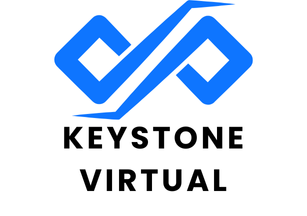Mastering AI: Crafting a Robust Network for Essential Infrastructure Resilience
In the era of rapid technological advancement, the integration of Artificial Intelligence (AI) into various infrastructures has become a cornerstone for enhancing resilience, efficiency, and security. This article delves into the intricacies of building a robust network infrastructure that leverages AI to ensure the continuity and reliability of essential services.
Understanding the Role of AI in Infrastructure Resilience
AI, encompassing machine learning, deep learning, and natural language processing, is revolutionizing how we manage and maintain critical infrastructure. Here are some key ways AI contributes to infrastructure resilience:
Also to read : Revolutionizing Smart Home Automation: The Role of AI in Transforming User Experience
Predictive Maintenance
AI algorithms, particularly those using machine learning and deep learning, can analyze sensor data and historical trends to predict equipment failures before they occur. For instance, Siemens employs AI for predictive maintenance, anticipating equipment wear and minimizing downtime by up to 36 hours.
Real-Time Decision Making
Adaptive AI enables real-time decision-making by integrating data from various sources and using predictive analytics. This is crucial in scenarios like industrial monitoring, where immediate actions can prevent accidents and optimize energy consumption.
Additional reading : Revolutionizing Online Identity Verification: The Role of Blockchain Technology in Streamlining Processes
Enhanced Security
AI-driven systems can monitor network traffic in real-time, detecting and responding to cyber threats more effectively than traditional methods. Intrusion Detection Systems (IDS) are a prime example, alerting administrators to suspicious activities and helping to prevent data breaches.
Building a Secure Network Infrastructure
A robust network infrastructure is the backbone of any AI-driven system. Here’s how you can ensure your network is secure and resilient:
Secure Wi-Fi Networks
Securing Wi-Fi networks is essential, especially in multi-site environments. Using strong, complex passwords and implementing separate networks for different user groups can significantly reduce the risk of cross-network attacks. For example, churches can use virtual local area networks (VLANs) and firewalls to segment traffic and control access.
Implement Rigorous Access Controls
Access controls are critical to ensure that only authorized personnel have access to sensitive information. Establishing user roles with appropriate permissions and using VLANs and firewalls to segment network traffic can protect sensitive data from unauthorized access.
Data Management and Integration
Effective data management is pivotal for AI systems to function optimally.
Data Collection and Preprocessing
AI models rely on high-quality data to make accurate predictions and decisions. Ensuring that data is collected from reliable sources, preprocessed correctly, and integrated seamlessly into the system is crucial. For instance, in urban planning, AI models use spatio-temporal data and multimodal data fusion to make informed decisions about land utilization and resource optimization.
Data Science and Analytics
Data science plays a vital role in extracting insights from the data collected. Techniques like reinforcement learning, deep learning, and natural language processing are used to analyze complex data patterns and make real-time decisions.
AI-Driven Solutions for Urban Planning
Urban planning is one area where AI is making significant strides, particularly in ensuring the resilience and sustainability of cities.
Representation and Quantification of Urban Environments
AI models use graph neural networks and representation learning for spatio-temporal data to understand and quantify urban environments. This helps in better land utilization, resource optimization, and infrastructure development.
Predictive Modeling and Forecasting
AI-driven predictive models forecast urban time series data, such as energy consumption, traffic flow, and demographic changes. This enables policymakers to make data-driven decisions and ensure the sustainability of urban infrastructure.
Ensuring AI Security in Real-World Applications
As AI becomes more pervasive, ensuring its security is paramount.
Key Frameworks and Models
Frameworks like the EU AI Act, NIST AI Risk Management Framework (AI RMF), and OWASP Top 10 for Large Language Models provide essential guardrails for securing AI initiatives. These frameworks help in identifying and mitigating risks associated with AI deployment.
Software Bill of Materials (SBOM)
SBOMs are crucial for software supply chain security, providing transparency and supporting vulnerability identification and remediation. Ensuring the quality of SBOMs is vital for maintaining the security of AI systems.
Practical Insights and Actionable Advice
Here are some practical tips for building a robust AI-driven network infrastructure:
Regular Training and Education
Regular training for staff on recognizing and responding to cyber threats, such as phishing attacks, is essential. This can significantly reduce the risk of unauthorized access and data breaches.
Continuous Model Updates
AI models need continuous updates to adapt to changing conditions and user needs. Retuning hyperparameters, performing feature engineering, and retraining the model with fresh data are critical steps to maintain the model’s effectiveness.
Hybrid Security Architectures
Combining optimized on-premises defenses with advanced cloud-based solutions can provide a more resilient and adaptable security posture. This hybrid approach is particularly effective in responding to complex ransomware campaigns and cloud infrastructure breaches.
Real-World Examples and Anecdotes
Siemens’ Predictive Maintenance
Siemens’ use of AI for predictive maintenance is a compelling example of how AI can enhance infrastructure resilience. By predicting equipment failures up to 36 hours in advance, Siemens minimizes downtime and optimizes production processes.
Urban Planning in Philadelphia
The 1st Workshop on AI for Urban Planning, part of the AAAI-25 conference, highlights innovative AI-driven solutions for urban planning challenges. This includes using AI to build sustainable, diverse, and human-centric cities by optimizing land utilization, resource optimization, and infrastructure development.
Crafting a robust network infrastructure that leverages AI is a multifaceted task that requires careful planning, implementation, and maintenance. By understanding the role of AI in predictive maintenance, real-time decision making, and enhanced security, and by implementing secure network practices, effective data management, and continuous model updates, organizations can ensure the resilience and sustainability of their critical infrastructure.
Detailed Bullet Point List: Key Steps for Building a Robust AI-Driven Network Infrastructure
-
Secure Network Design:
-
Use strong, complex passwords for all network access.
-
Implement separate networks for different user groups.
-
Use VLANs and firewalls to segment network traffic.
-
Monitor network traffic with Intrusion Detection Systems (IDS).
-
Data Management:
-
Collect data from reliable sources.
-
Preprocess data correctly.
-
Integrate data seamlessly into the system.
-
Use data science techniques like reinforcement learning and deep learning.
-
AI Model Development:
-
Use machine learning and deep learning algorithms.
-
Implement real-time decision-making capabilities.
-
Continuously update and refine the model.
-
Use frameworks like EU AI Act and NIST AI RMF for security.
-
Training and Education:
-
Provide regular training for staff on cyber threats.
-
Educate teams on AI model deployment and maintenance.
-
Ensure continuous learning through online courses and workshops.
-
Hybrid Security Architectures:
-
Combine on-premises defenses with cloud-based solutions.
-
Use SBOMs for software supply chain security.
-
Implement threat intelligence and SOAR (Security Orchestration, Automation, and Response) systems.
Comprehensive Table: Comparing AI Frameworks and Models for Security
| Framework/Model | Description | Key Features |
|---|---|---|
| EU AI Act | Regulatory framework for AI in the EU | Ensures transparency, accountability, and risk mitigation |
| NIST AI RMF | Risk management framework for AI | Provides guidelines for identifying and mitigating AI-related risks |
| OWASP Top 10 for LLM | Security guidelines for Large Language Models | Identifies common security risks and provides mitigation strategies |
| MITRE ATLAS | Threat modeling framework for AI systems | Helps in identifying and mitigating advanced threats |
| SBOM | Software Bill of Materials | Provides transparency and supports vulnerability identification and remediation |
Quotes and Insights
- “AI analyzes sensor data and historical trends to predict equipment failures before they occur, enabling preventative maintenance and minimizing downtime.” – Binariks
- “Frameworks like the EU AI Act, NIST AI RMF, and OWASP Top 10 for Large Language Models provide essential guardrails for securing AI initiatives.” – Seth Misenar, SANS Faculty Fellow
- “Combining optimized on-premises defenses with advanced cloud-based solutions can provide a more resilient and adaptable security posture.” – Ismael Valenzuela and Andy Smith, SANS
By following these guidelines, organizations can master the art of crafting a robust network infrastructure that leverages AI to ensure resilience, security, and efficiency in their operations.











